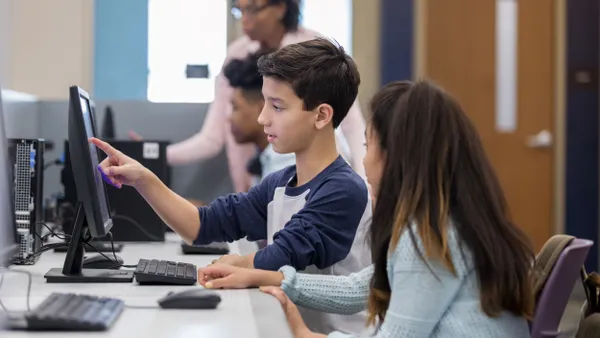Dive Brief:
-
Teachers in Kentucky’s Jefferson County School District use “response lessons” to help identify gifted and talented students who would otherwise be missed, Education Week reports, noting that the changes led to a 44% increase in identified students, with nine out of 10 of those identified via the approach qualifying for free- and reduced lunch.
-
The approach — which has also been used in Florida's Seminole County and other districts — presents students with a lesson on an unusual topic they likely haven't seen and measures how quickly they respond to and think creatively about it, helping teachers identify students who may not excel on a test or attract a referral.
-
A nationally representative Education Week Research Center survey found 58% of gifted educators say students living in poverty are underrepresented in their schools’ programs, but while testing everyone is the best way to eliminate the gap, the means of identification must be varied.
Dive Insight:
Minority students have long been overlooked by those who identify gifted and talented students. A Purdue University report claims racism, classism and elitism play a part.
Broken down by race, students who were overlooked come from racial groups that have long been underrepresented: black youth are missing at a rate of 63% to 74%, Latinx at a rate of 53% to 66%, and American Indian/Alaska Natives at a rate of 48% to 63%.
Many districts, as mentioned above, are re-examining their screening processes. Minnesota’s Mankato Area Public Schools adjusted its screening process by using tests that don’t favor middle-class English speakers. It also opted to screen all students and widened the circle of adults who could recommend a student for the program. Students can also now be referred based on local norms instead of national ones.
While districts struggle to identify their gifted and talented students, they also face a new problem once students get into the program: The National Center for Research on Gifted Education found many students identified as gifted don’t always receive services.
Sometimes students are pulled out of their regular classes for gifted programming, but those curriculums don’t always align with academic standards and are loaded with curricula designed to improve students’ processing skills, requiring schools and districts using gifted programming to retool those materials and resources to reflect the district’s objectives.











